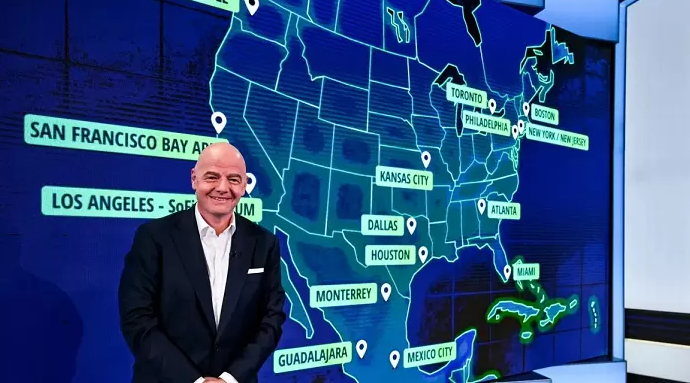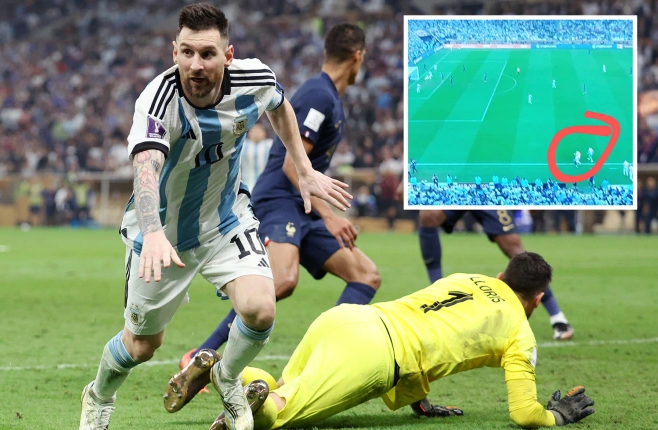Get ready for the 2026 World Cup, the most chaotic edition FIFA could ever imagine

The 2022 World Cup played in Qatar was different from all perspectives. Putting aside for a moment all the political and social controversies that arose during the tournament, the one played under the skies of Doha was one of the most innovative and pioneering tournaments ever seen.
A strange World Cup in a way, with news on all fronts: from extra time due to injuries to VAR to last-generation stadiums that can be erected and taken down in a month, just to allow the development of matches. In short, there have been many innovative aspects that have caught the wave of modernity.
With these premises, it is easy to think that in four years, in view of the 2026 World Cup, the situation can improve further. After what was seen in Qatar, expectations for the international event, which will be played in three countries, the USA, Canada and Mexico, will be very high.
But above all, they will represent the beginning of a new era requested by FIFA since, starting from the 2026 edition, the World Cup will be played with the participation of 48 teams and no longer 32.
It is not yet known how everything will be structured, but certainly between times, groups and general organization, after four years the World Cup will be characterized by further and essential innovations.
A mini-revolution that will encompass the entire structure of the tournament. An inevitable situation since for the first time in history there will be 48 national teams that will have to claim the title in the final stage of a World Cup after the planned challenges for qualifications.
The natural format of 32 teams in eight groups with the top two teams qualifying to create the perfect 16-team knockout round has now been completed. Therefore there will be more teams and therefore more matches and therefore a longer tournament.
The World Cup in Qatar lasted about 32 days in all under the current format (although it has been reduced to 29 in Qatar), but it will take at least 35 days if FIFA expands to a mammoth 104-match tournament compared to 64 now.
The evolution of the World Cup program throughout history saw the transition between 13 and 16 national teams in 1930, 1934, 1938 and 1950. From 1954 onwards, the tournament had 16 teams until it was 24 for Mexico ’86, and then 32 for France ’98.
The move from 32 to 48 teams represents a 50% increase and will also make it difficult for any country to host the event due to the high demand for facilities required for an event of this caliber.
Chaos is inevitable, just think that FIFA has not yet announced the structure of the groups and the methods that will lead the national teams through the tour. Therefore, the group formula is still to be decided in what will be the strangest World Cup ever.
Will it be 16 groups of 3 with the top two going through, or 12 groups of 4 with the best 8 third place teams going through, or a formula with two different tables and the two winners challenging each other – the other one for the final?
It is not yet clear and Infantino has also announced that this information will be released soon but there are many ideas for structuring it in the best possible way and in the coming months they will be formalized by FIFA in action of the beginning of the qualifying phase.
What is certain at the moment is that there are 16 additional qualifying places (in total there will be 45 places available, with the three host countries automatically qualifying).
The United States, Mexico and Canada will be included in the six countries allocated for North, Central and Caribbean America (CONCACAF). Given the context, the question then arises: what will be the match schedules and how many matches will be played per day?
In 2026, it is likely that a total of 104 matches will be played, of which 72 will be in the group stage. The World Cup will be played in 16 cities: Vancouver, Seattle, San Francisco, Los Angeles, Guadalajara, Mexico City, Monterrey, Dallas, Houston, Kansas City, Atlanta, Miami, Boston, New York/New Jersey, Philadelphia and Toronto.
Therefore, it will be necessary to understand, depending on the different time zones, how to guarantee the most suitable television coverage around the world, taking for granted a spread of matches in different time periods.
For example, the first game of the day may start at 1:00 PM on the East Coast of the United States (7:00 PM in Albania) and the last game may be set at 10:00 PM on the West Coast (7:00 AM in future in Albania).
In short, it will be necessary to understand how everything will be calibrated to make the first edition of the 48-team World Cup a spectacle that can be enjoyed around the world.




